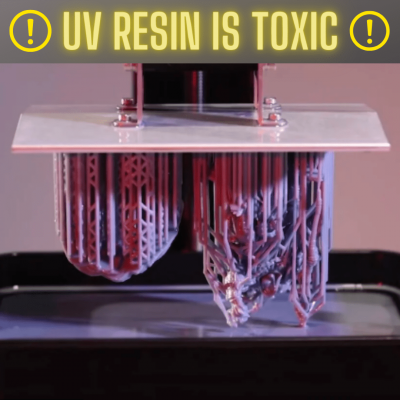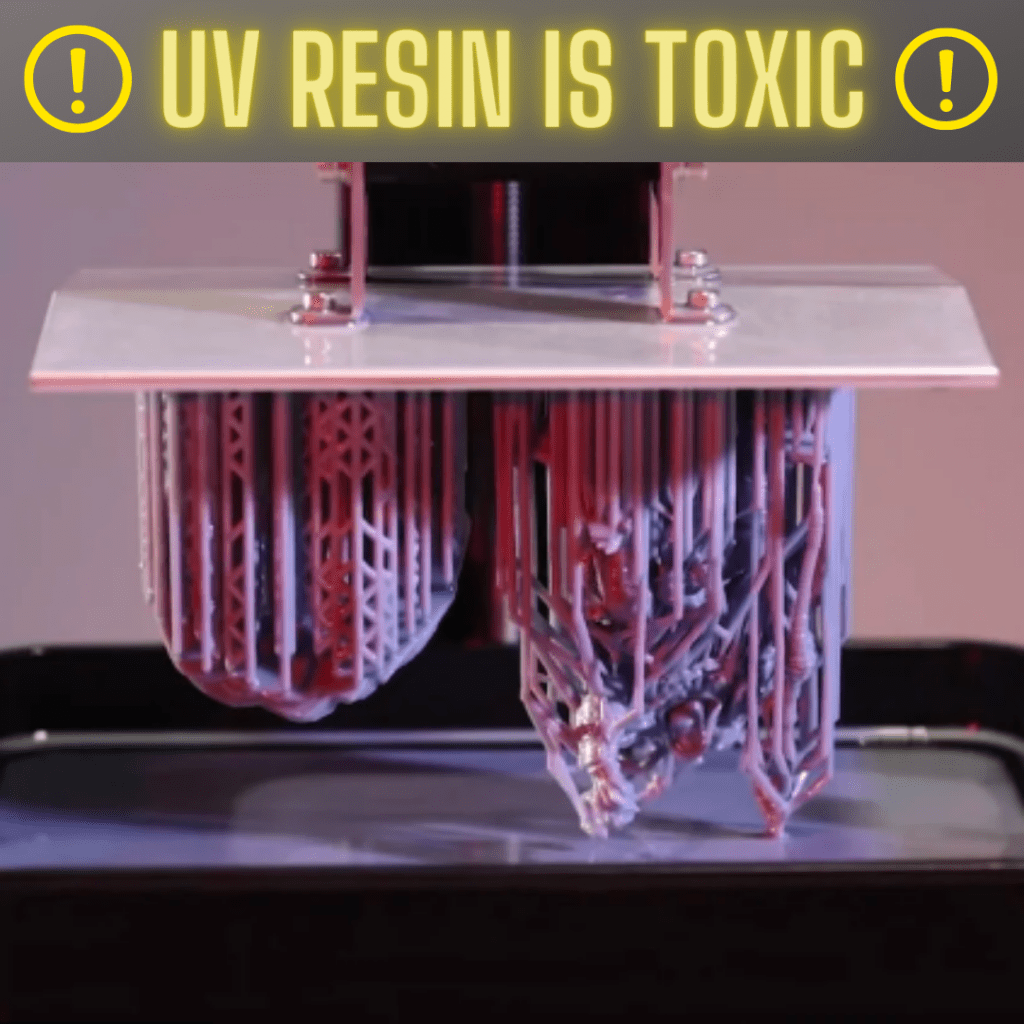
Hi, friends! If you make jewelry, miniatures, or crafts with UV resin, you might have wondered about its safety. After all, you’re working with a material that hardens when exposed to ultraviolet light – so it stands to reason that it might not be great for your skin or eyes.
But is UV resin toxic? The short answer is yes – UV resin is technically a poisonous substance. However, the good news is that its toxicity is relatively low, and as long as you take some basic safety precautions, you should be able to work with UV resin without any problems.
So let’s take a closer look at the safety of UV resin and how you can use it without putting yourself at risk.
Table of Contents
Why is UV Resin Toxic? How Toxic Is It?

UV resin is hazardous because it contains irritants and pollutants that can harm people and the environment. In its uncured liquid form, UV resin includes chemicals that can cause skin irritation, eye irritation, and respiratory problems.
In addition, UV resin releases volatile organic compounds (VOCs) into the air, harming the ozone layer and contributing to smog and air pollution.
UV resin is also toxic to aquatic life, so it must be appropriately disposed of to avoid harming animals and plants. Despite its dangers, UV resin is still used in 3D printing because it is solid and durable.
How to Properly Use UV Resin
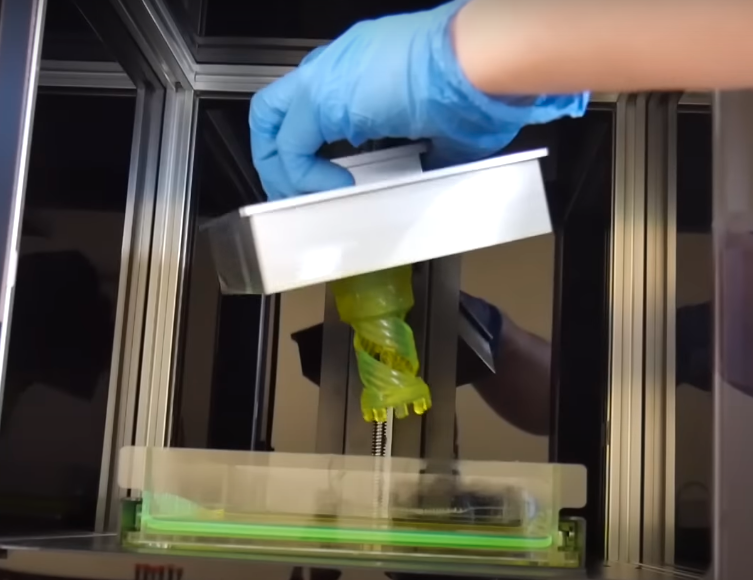
UV resin is a type of glue that is cured using ultraviolet light. It is commonly used in crafts and jewelry making, as it can create a strong bond between different materials. UV resin is also clear, so you can use it to create beautiful gemstone-like effects.
However, UV resin can be tricky to work with, and it is essential to take some precautions before using it:
- Always wear gloves when working with UV resin, as it can irritate the skin.
- Make sure to work in a well-ventilated area, as the fumes from the UV resin can be harmful.
- Always cure the UV resin entirely before handling it, as it will still be gummy until you fully cure it.
With these tips in mind, you can safely and effectively use UV resin in your next project.
Harmful Side Effects of UV Resin During Improper Handling
The versatility and durability of UV resin draw many crafters. However, knowing the potential risks of working with this material is essential. Exposure to uncured resin can cause skin irritation, and it is also harmful to aquatic life.
In addition, ingestion of uncured resin is dangerous. There is also speculation that it may cause long-term health problems such as menstrual issues, altered sexual behavior or fertility, and harm unborn children during pregnancy.
However, these potential risks are largely unproven due to a lack of research. Nevertheless, taking proper precautions when working with UV resin is essential, such as wearing gloves and working in a well-ventilated area.
With good care and handling, you can enjoy this versatile material’s benefits without putting yourself or the environment at risk.
Symptoms
Here are a few symptoms of UV resin poisoning:
Skin
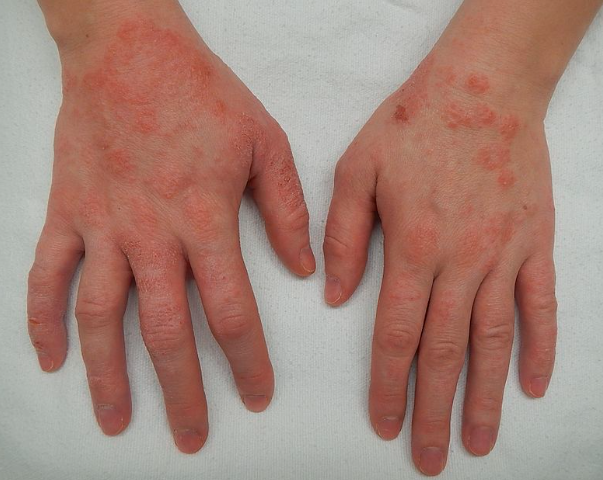
DERMATITIS
Many people don’t realize that uncured liquid resin can be quite harmful to the skin. If it comes into contact with exposed skin, it can cause a condition known as contact dermatitis, which is essentially a rash. Dermatitis can sometimes become more severe and even induce an allergic reaction.
After exposure to UV resin, you’ll contract dermatitis because many UV resins contain components that can irritate the skin, such as HDODA, HEMA, epoxidized soybean oil, and isooctyl acrylate.
So if you’re planning on working with UV resin, taking the necessary precautions to protect your skin is essential.
Eyes
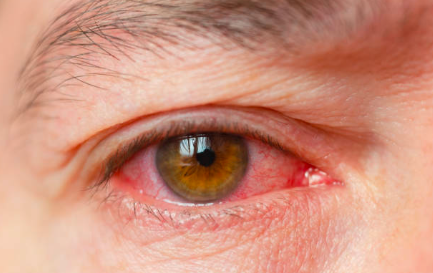
EYE IRRITATION
If you’ve ever worked with UV resin, you know that it can be tough on the eyes. The bright light reflecting off the shiny surface can cause headaches, eye fatigue, and even temporary blindness.
But what are the long-term effects of exposure to UV resin? Unfortunately, there is very little research on this topic. However, we know that UV resin can cause eye irritation.
Inhaled Fumes
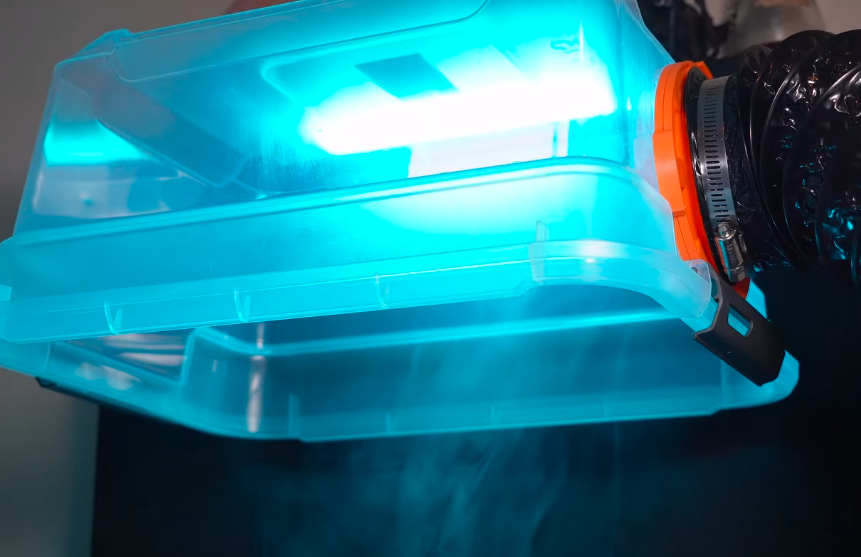
VAPORS/FUMES
Resin 3D printers also emit vapors or fumes that contain volatile organic compounds (VOCs). VOCs are dangerous to people if breathed in through the mouth or lungs and can cause various health problems.
Dizziness, headaches, and throat discomfort may occur after a brief exposure to resin fumes. Due to a lack of research, the long-term consequences of inhaling VOCs from 3D printer resin are unknown. However, they may include a higher risk of developing cancer.
Therefore, it is essential to protect yourself from these harmful fumes. When using a resin 3D printer, be sure to work in a well-ventilated area and wear a respirator or mask to avoid inhaling the fumes.
Toxic if Consumed

DON’T INGEST UV RESIN
If you’ve ever worked with UV resin, you know that it’s a powerful adhesive. Unfortunately, it’s also very poisonous if ingested, so it’s essential to be careful when using it. UV resin contains highly toxic photoinitiators in the organs, so eating either the liquid or solid form of UV resin is extremely dangerous.
If you accidentally ingest UV resin, call poison control immediately or go to the hospital right away. While UV resin is not food-safe, you can use it to create molds or patterns in its cured state.
You can use these molds and patterns to build food-safe parts from other materials. So, while you should be careful when handling UV resin, there are ways to use it safely and effectively.
Damaging to the Environment

NOT SAFE FOR THE ENVIRONMENT
Although it may seem like a quick and easy way to fix something, using UV resin is very damaging to the environment. UV resins are a type of pollution that can harm ecosystems and kill marine life.
When UV resin is not fully cured, it is classified as hazardous waste material and should be disposed of properly through designated toxic waste channels. However, even when UV resin is fully cured, it is still not safe for the environment and should be disposed of with care.
Bio-based resins are a better alternative to UV resins because they are less damaging to the environment in their liquid and cured states. When possible, it is always better to choose a less harmful option for the sake of our planet.
What To Do When You Accidentally Get in Contact with UV Resin
If someone you know ever gets in contact with UV resin – whether on your skin, in your eyes, or anywhere else – it’s essential to act quickly and decisively. First and foremost, remove the person from the exposure area with care.
Then, once they’re out of harm’s way, check to see if their airways are sealed off and if they’re breathing and have a pulse. If they do, proceed to step two. If they don’t, call 911 immediately.
Next, you’ll want to get rid of any leftover substance that may be on their skin or in their mouth. For skin contact, wash the area with soap and water. Then, use a damp cloth to cleanse the affected area if it comes into contact with the eyes or mouth.
Finally, transport the patient to the nearest emergency room for additional care. Be sure to bring the chemical container or bottle with you, if possible, so medical professionals can identify the substance and provide appropriate treatment.
Proper Waste Disposal of UV Resin
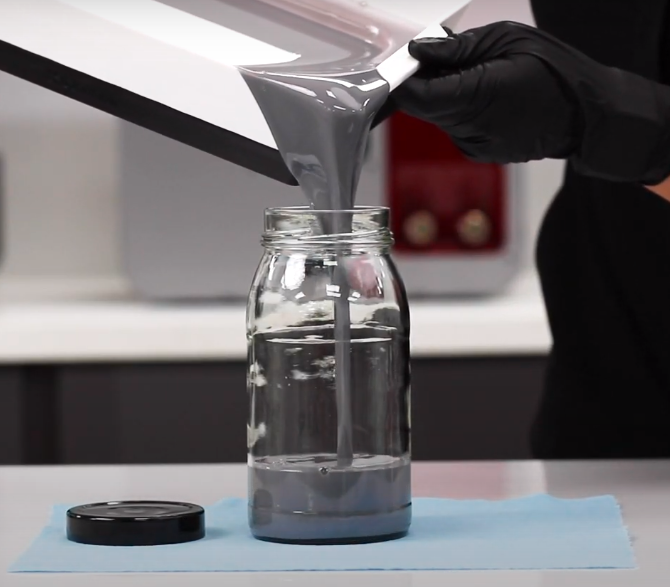
Most people know the importance of proper waste disposal, but when it comes to UV resin, there are a few extra things to remember. First and foremost, always wear gloves when handling resin, as it can harm your skin.
Once you’ve put on your gloves, pour a small amount of resin into a labeled, clear, resin-safe container. Then, set the container in the sun to cure for 1-10 days. Once the resin is fully cured, you can dispose of it with your household garbage.
However, another option is to call your local recycling or garbage facility to have them dispose of it for you. Either way, following these steps, will help ensure that your UV resin is appropriately disposed of and doesn’t harm the environment.
Using Isopropyl Alcohol to Clean UV Resin
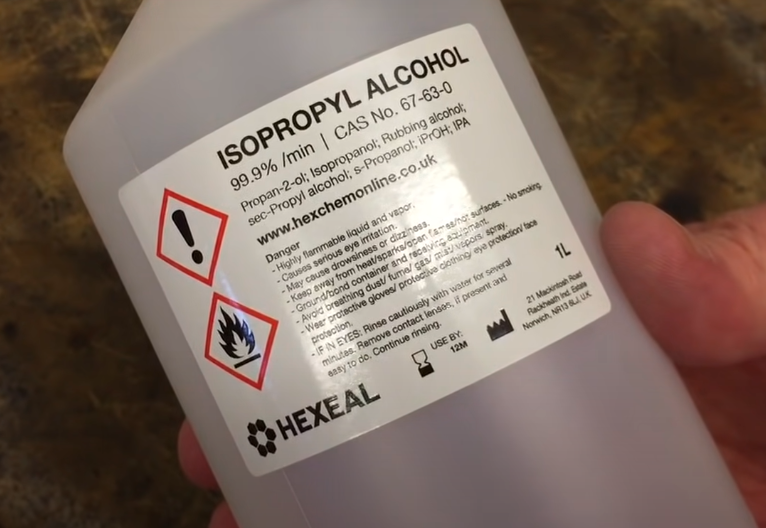
Isopropyl alcohol, also known as rubbing alcohol, is a typical household cleaner. It’s also an effective solvent for cleaning UV resin. When cleaning up resin spills or removing resin from your tools and workspace, isopropyl alcohol is the best choice.
It breaks down liquid resin quickly and is the most effective way to remove resin from any surface. Isopropyl alcohol is available in different concentrations, but for cleaning UV resin, you’ll need a 99.9% solution.
This high concentration of isopropyl alcohol will dissolve resin quickly and thoroughly clean your tools and workspace.
However, be careful when handling isopropyl alcohol, as it is flammable and can be harmful if ingested. When using isopropyl alcohol to clean UV resin, always work in a well-ventilated area and wear gloves to protect your hands.
How to Properly Store UV Resin After Use
After you’ve worked on that carefully crafted resin piece, the last thing you want is for it to fade or become warped. Luckily, with some care, you can keep your resin looking as good as new for years to come.
The first step is to find an appropriate storage location. The optimum location for resin storage is in a closet with climate control. Exposure to UV light accelerates fading, and temperature changes cause condensation to collect inside the lids.
So keep your resin between 60 and 80 °F and in the dark. Once you’ve found the perfect spot, close the lid on your container after each use.
UV Resin Shelf Life
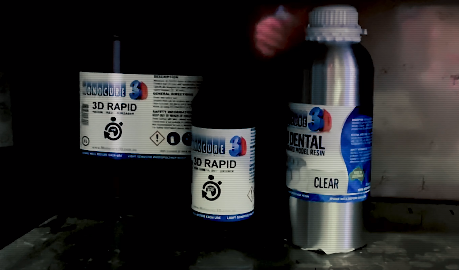
UV RESIN SHELF LIFE
Most people assume that once they’ve opened a bottle of UV resin, they have about a year to use it before it goes bad. However, it’s important to note that the shelf life of UV resin varies depending on the brand and type of resin.
Additionally, how you store your resin can affect its longevity. For example, if you store your resin in a cool, dark place, it will last longer than if you keep it in a warm environment. Typically, the shelf life of UV resin is 12 months, according to all manufacturers.
The bottle of the majority of brands should list both the production and expiration dates; however, some only list the manufacture date, in which case you can presume that it will go bad after a year.
To be on the safe side, if you’re not sure when you purchased your resin or how long it’s been open, it’s best to err on the side of caution and assume that it’s near the end of its shelf life. If you want to extend your UV resin’s life, you can do a few things:
- Make sure you’re storing it in a cool, dark place.
- Tightly seal the bottle when you’re not using it.
- Don’t forget to clean your tools after each use!
Taking these precautions can help ensure that your UV resin will last as long as possible.
UV Resin is Non-Toxic When Cured
UV resin is a type of clear resin that hardens when exposed to ultraviolet (UV) light. It is commonly used in jewelry making and miniatures. One of the main benefits of UV resin is that it sets very quickly, which can be a huge time saver.
However, some 3D printer hobbyists have expressed concern about whether UV resin is safe to use since it contains chemicals that can be harmful if inhaled or ingested.
The good news is that UV resin is non-toxic when cured, meaning it is safe to use for most people. However, working in a well-ventilated area is vital to avoid inhaling fumes from the resin.
Check out our article on the best wash and cure stations for curing resin.
In addition, you should avoid skin contact with uncured UV resin, as it can irritate. If you come into contact with uncured resin, wash the affected area with soap and water as soon as possible. With these precautions in mind, you can enjoy using UV resin without worry!
UV Resin VS Bio-Resin
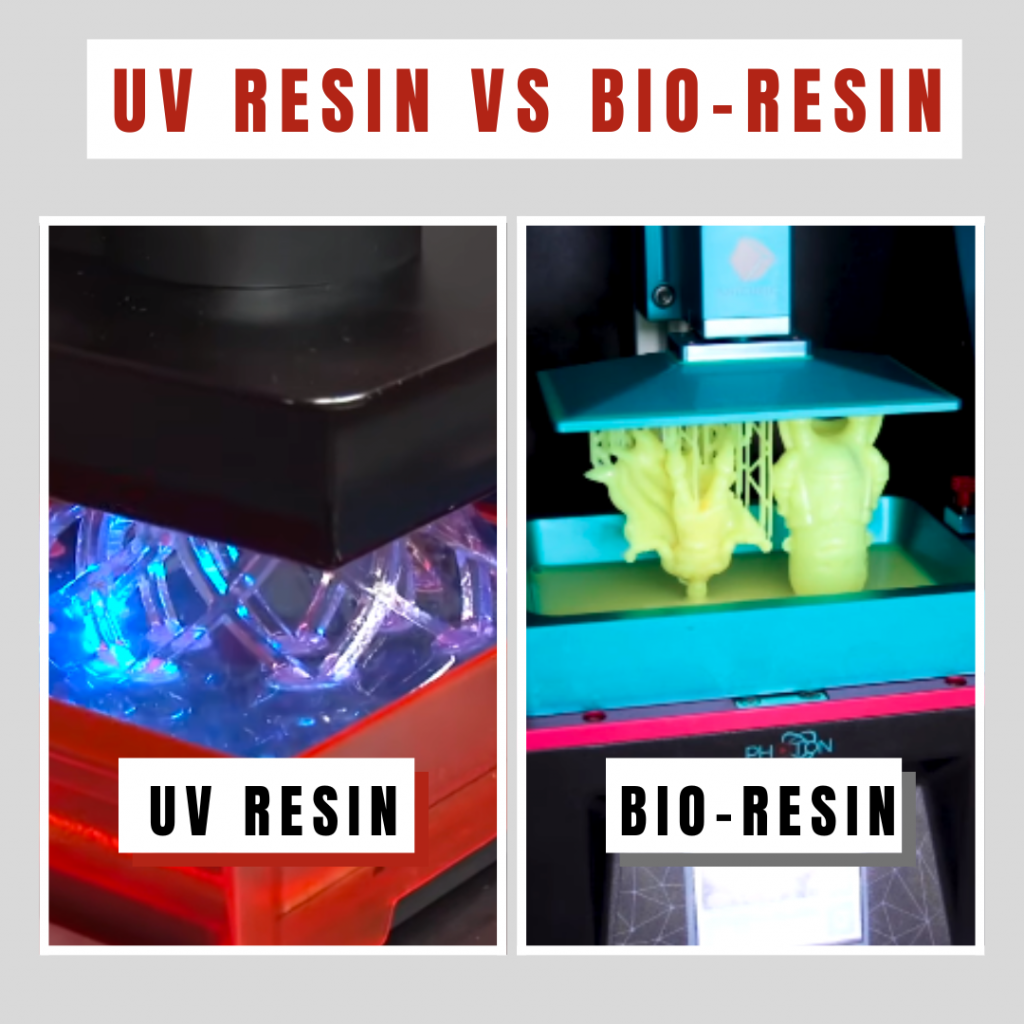
If you’re looking to buy resin, you might wonder what the difference is between UV resin and bio-resin. In short, UV resin is a type of plastic cured with ultraviolet light, while bio-resin is made from plant-based materials and cured with heat. But which one is better for you?
What is UV Resin?
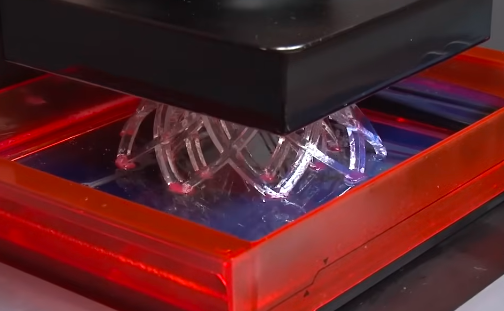
UV resin is a type of synthetic resin that cures (hardens) when exposed to ultraviolet light. It’s often used in jewelry making, as well as in other crafts like model making and dollhouse miniatures. UV resin is available in transparent or opaque formulas, as well as in a variety of colors.
UV Resin Pros
UV resin has a few advantages over bio-resin. First, it cures much faster – usually in just a few minutes. This makes it ideal for projects that need to be completed quickly. Second, UV resin generally has a lower viscosity than bio-resin, which means it’s less likely to cause bubbles when curing.
UV resin is that it cures quickly. You can typically cure UV resin within minutes so that you can get started on your project immediately. Additionally, because UV light is readily available (you can find it in sunlight or with a UV lamp), you don’t need any special equipment to cure UV resin.
Another benefit of UV resin is that it doesn’t shrink that much as it cures, so you don’t have to worry about your finished project being smaller than expected. Because it doesn’t shrink much, there’s less chance that your project will warp or distort as it cures.
UV Resin Cons
On the downside, UV resin is not as strong or durable as bio-resin. It’s also not as eco-friendly since it’s made from petroleum-based materials. Additionally, UV resin can harm your skin and eyes if you’re not careful when working with it.
One downside of UV resin is that it can be more expensive than other resins. Additionally, because it dries quickly, you must work fast and be careful not to make any mistakes. If you make a mistake while working with UV resin, you might not have time to fix it before the resin sets.
What is Bio-Resin?
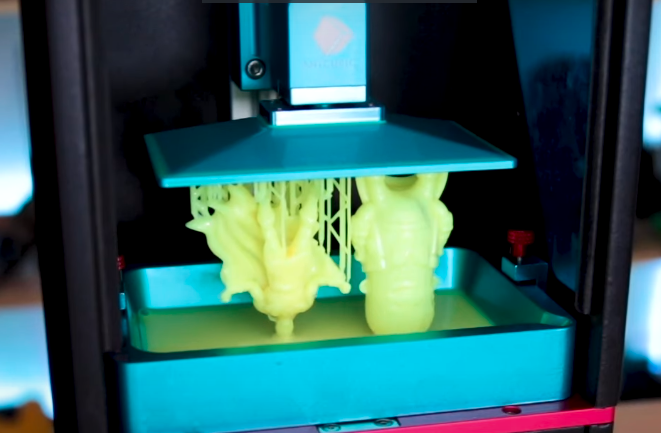
Bio resin is made from plant-based materials like soybeans, corn, and tree sap. Like UV resin, bio resins are available in clear or opaque formulas and can be tinted with colorants. However, unlike UV resins, bio resins are not cured with ultraviolet light but with heat.
Bio-Resin Pros
Bio resin has a few advantages over UV resin. First of all, it’s much more eco-friendly since it’s made from plant-based materials. Additionally, bio-resin is stronger and more durable than UV resin.
And finally, bio-resin is non-toxic and safe for your skin and eyes. Furthermore, bio resins tend to be more environmentally friendly than other types of resins because they’re made from renewable resources.
Additionally, because bio-resins are cured with heat instead of light, they’re less likely to yellow over time.
Bio Resin Cons
The main disadvantage of bio-resin is that it takes longer to cure than UV resin – usually around two weeks. Additionally, bio-resin tends to be more expensive than UV resin.
One downside of using bio-resin is that it has a strong odor when first mixed—a scent that some people find unpleasant. Additionally, because bio-resins are cured with heat instead of light, you’ll need access to an oven or heat gun to cure them.
So, which is better for you – UV Resin or Bio Resin? That depends on your needs and preferences. If you’re looking for a quick-curing option, UV resin is probably the way to go. However, bio-resin might be the better choice if you’re looking for something more durable and eco-friendly.
Conclusion
So, what does all of this mean for you? First and foremost, it’s essential to be aware that UV resin is toxic in its uncured state. This means that if you are working with UV resin, always use protective gear – goggles and gloves – and avoid skin contact as much as possible.
If you do come into contact with UV resin, wash the area immediately with soap and water. Second, remember that even cured UV resin can cause eye and skin irritation, so take precautions when working with it.
Finally, keep in mind that long-term exposure to UV resin may have harmful health effects. If you are regularly exposed to cured or uncured UV resin, make sure to talk to your doctor about any potential health risks. Thanks for reading!


